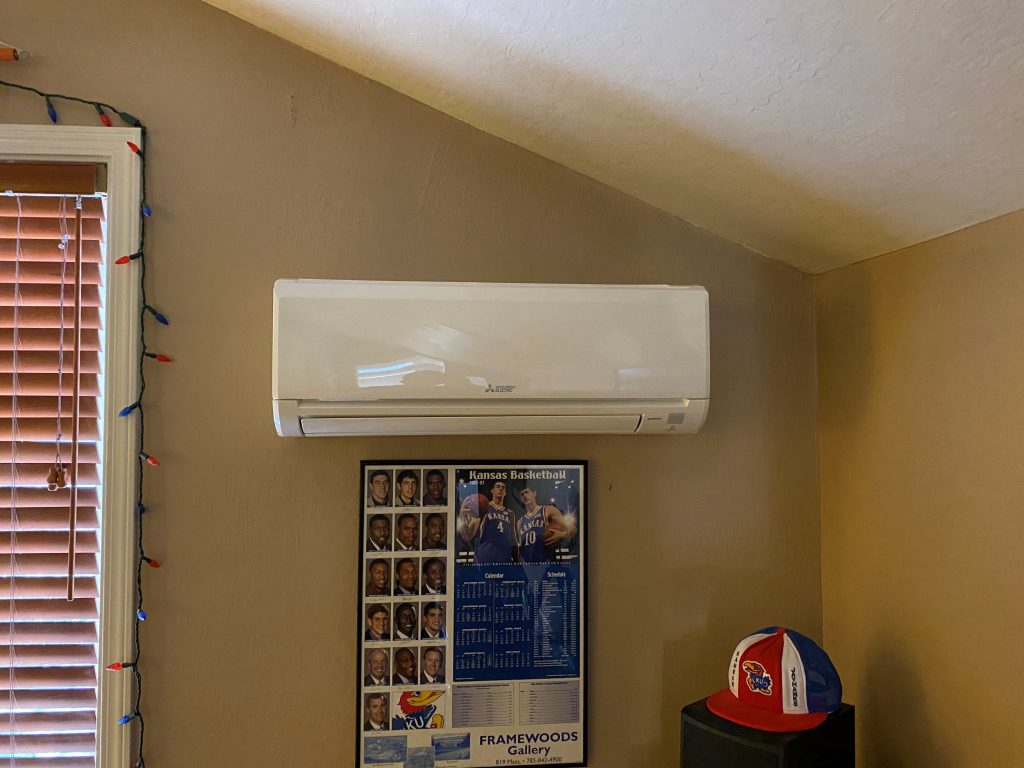- (707)-741-1993
- chris@precisionhvacco.com
- Serving Solano & Surrounding Counties
Mini-Split Unit Vs. HVAC Units Which Is Best for You?
Over time regulating indoor air quality and the temperature has grown beyond the scope of luxury to necessity. Our indoor temperature affects us more than we can imagine. Regulating it can enhance our health, comfort, well-being, and even productivity.
To do this, you need the right cooling system. With so many indoor air cooling/heating options out there, you need to be properly guided to make the best choice.
Most homes in the U. S make use of central air conditioning systems. But we have today a good number of people switching to mini-split units. We usually have many people asking for the best indoor air cooling/heating unit between the traditional HVAC unit and the mini-split unit.
Pointing a finger at one of the two, and tagging it the best, might be misleading. The two fit different home conditions. So you need to make a choice that’s the best fit for you.
Seeing the uproar of indecisiveness amongst so many Americans, we have decided to discuss all the information you’ll need to make a good choice between the HVAC unit and the mini-split unit. We will compare the two. Then hope you’ll have a better idea of which will be the best for you.
Before we get started with the comparisons, let’s first walk you through a brief detail about the two systems.

Brief About Mini-Split Units
A mini-split unit is a system that fulfills the responsibility of cooling/heating the indoor air of a room without using duct channels. It has an outdoor and indoor unit. The indoor unit consists of a blower and evaporator that draws warm air from the room and sends it to the outside unit, which further transports it outside the room.
Meanwhile, the outside unit, which is a condenser, collects outside air, allowing refrigerants to pass through it. This process cools the air, then sends it to the indoor unit, which further transports it straight to the room. Since it is ductless, it can only heat/cool a single room.
Brief About HVAC Units
The HVAC unit uses a series of ducts and vents as a medium to circulate cold/hot air in your home. It also comprises an outdoor unit (condenser), an indoor unit (compressor), and an air handling unit.
The industrial axial fans help to suck outside air inside the room. The air passes through a filter to filter out suspended particles present in the air.
Refrigerants help to cool the filtered air in the cooling unit by passing it through the refrigerant in a heat exchanger. The cooled/heated air is pushed to the room with a blower and enters each room through the ducts.
Comparisons
1. Ease of installation
Installation of a mini-split unit is an easy-peasy project when compared to that of the HVAC unit. It requires nothing from you other than some hour of work and a three-inch hole in your wall. Once the hole is set, all you need to do is to connect the indoor unit and the outdoor unit with a connecting pipe.
Since ducts aren’t involved, there’s no need to worry about rebuilding walls or ceilings around the duct. Although the installation of a mini-split unit is a breeze, it is still highly recommended to let the HVAC expert do it.
2. Energy efficiency
Cold/hot air produced X meters away from Sam’s room will have to be transported through the duct. During this transportation, there’s energy loss. This energy loss is about 30% of the total energy consumed. Huge loss. The loss even gets worse if there are holes or cracks in the ductwork. On the other hand, mini-split units release the generated cold/hot air straight into the focused room.
3. Zone cooling/heating
Since the mini-split unit is only for a single room, you will escape the trouble of warming/cooling empty rooms just to get comfortable in your room. With the HVAC, if you lower your thermostat for your room to cool, you can’t stop Sam’s room from cooling as well, even though he isn’t at home. That’s energy wasting. And you just can’t do anything to help. Bummer!
Also, with an HVAC, how will you settle the case if Sam and Bred want their room to be at different temperatures? But with a mini-split, you can warm your basement during the winter without warming other rooms. Everyone has the freedom to warm independently.
4. Noise produced
As your HVAC system delivers air through the ducts, it creates vibrations that can get loud. With a mini-split unit, you cancel out the loud noise the HVAC system produces. Also, as the compressor of a mini-split unit is outside, you won’t be disturbed by the noise it produces in delivering its duty.
5. Indoor air quality
If you are focused not only on getting your desired temperature to your home but also on good quality indoor air, then you choose an HVAC unit instead. An HVAC unit is equipped with air filters to help filter the air entering your home. And other units that help to further purify the air. Meanwhile, a mini-split unit controls only the temperature and humidity of your indoor air.
6. Cost
Mini-split units are more expensive as compared to HVAC units. They can cost about 30% more than a central AC and can even double the price of a window AC.
7. Maintenance cost
You should be ready to flex your financial muscle a bit to keep your HVAC unit maintained throughout the year. Changing air filters and fixing cracked ducts is a must to keep the system functioning optimally. Although a mini-split unit might seem more expensive at the onset, it will save you lots of dollars in saving your excess utility bills for the extra energy conserved by not warming up Sam’s room.
Final Thoughts
In the HVAC unit vs. mini-split unit debate, which is the perfect pick for you? Check out the conditions that come with each unit and make up your mind. Whether an HVAC unit or a mini-split unit, being in control of the temperature of your indoor air is a necessity. Precision Air Solution is the best company to buy and install your choice at the most affordable price. We also have our consultant on board to guide you through the best choice for you. Contact us today.
